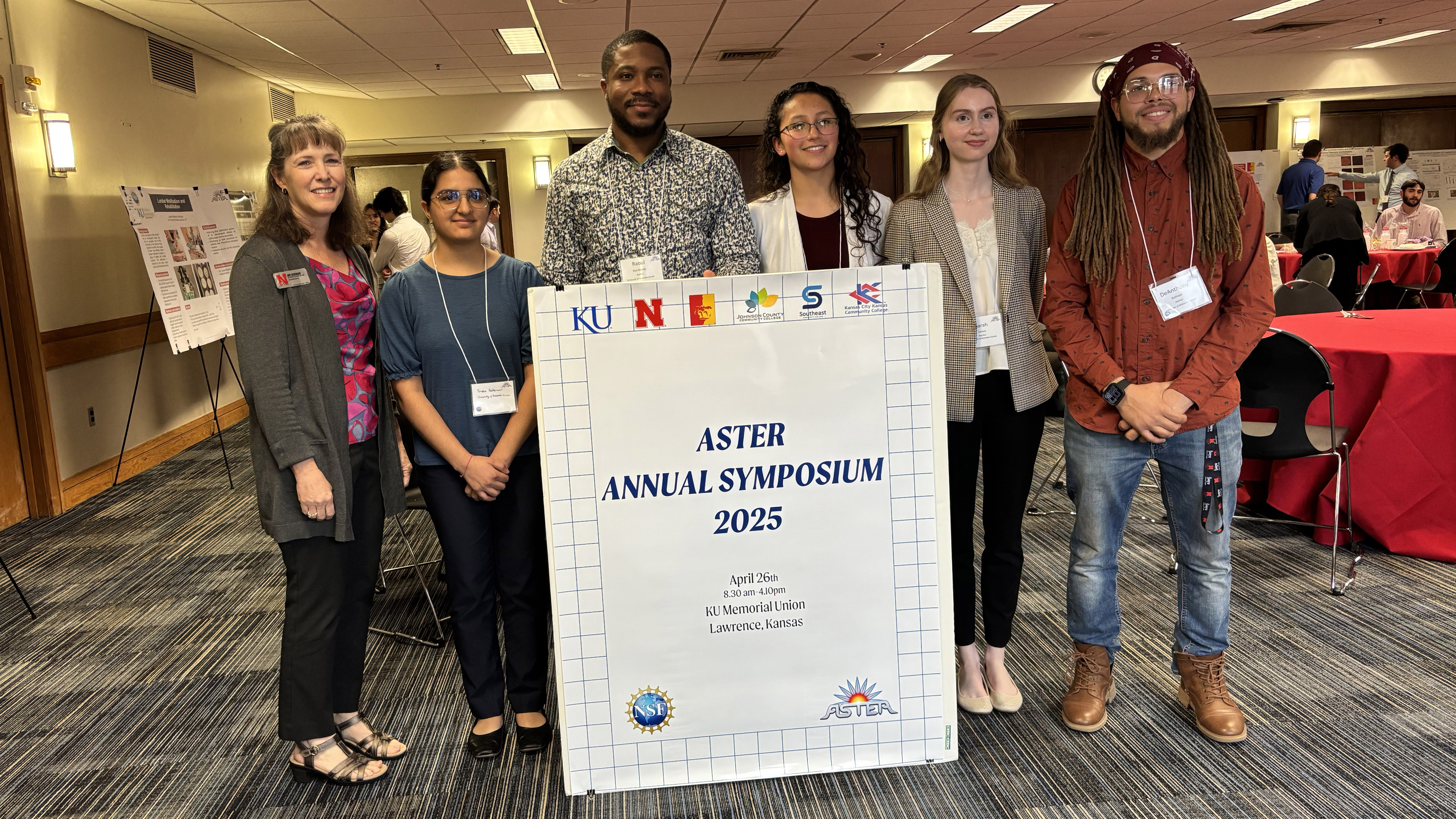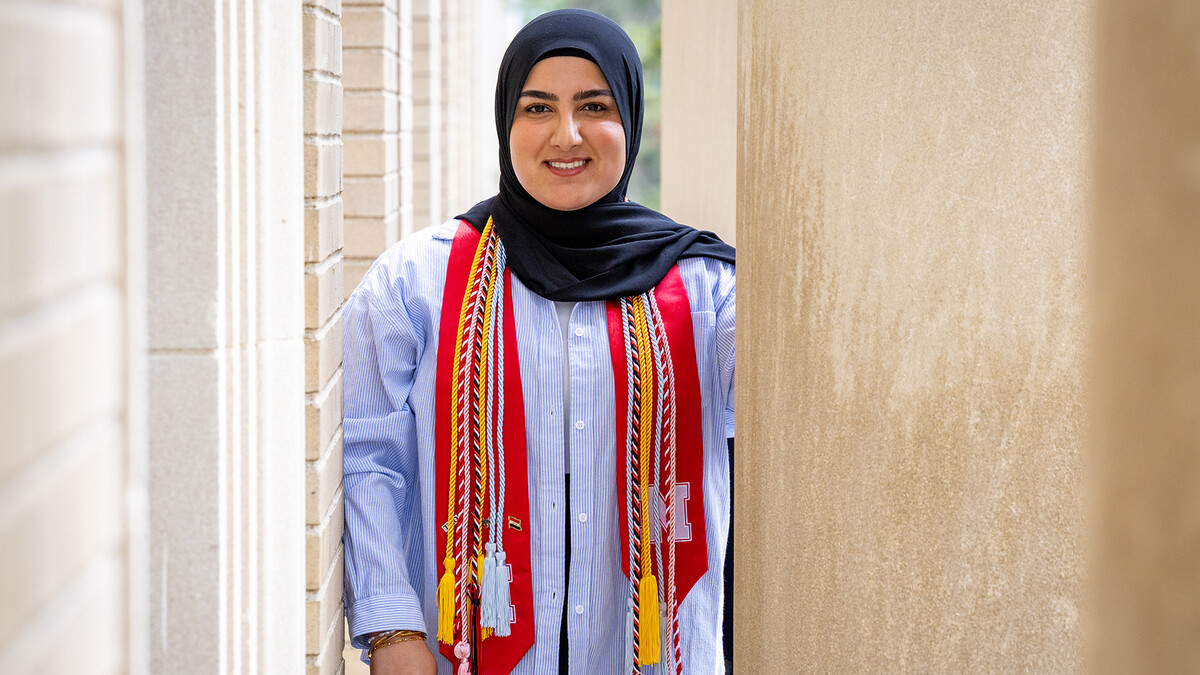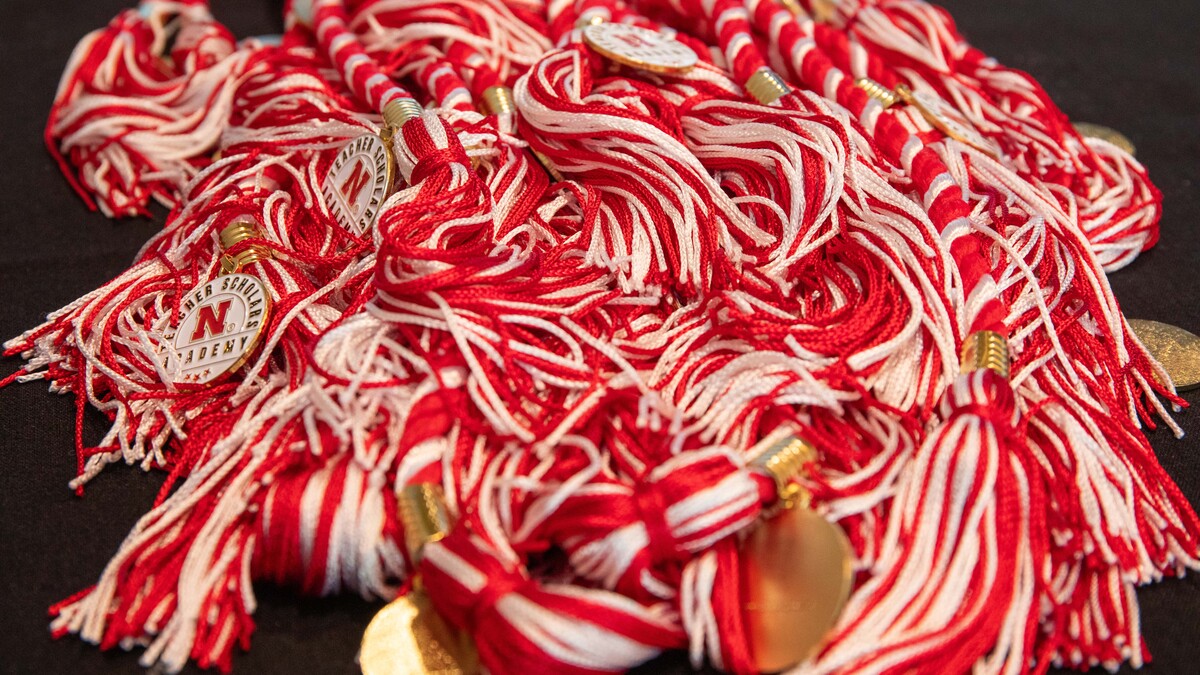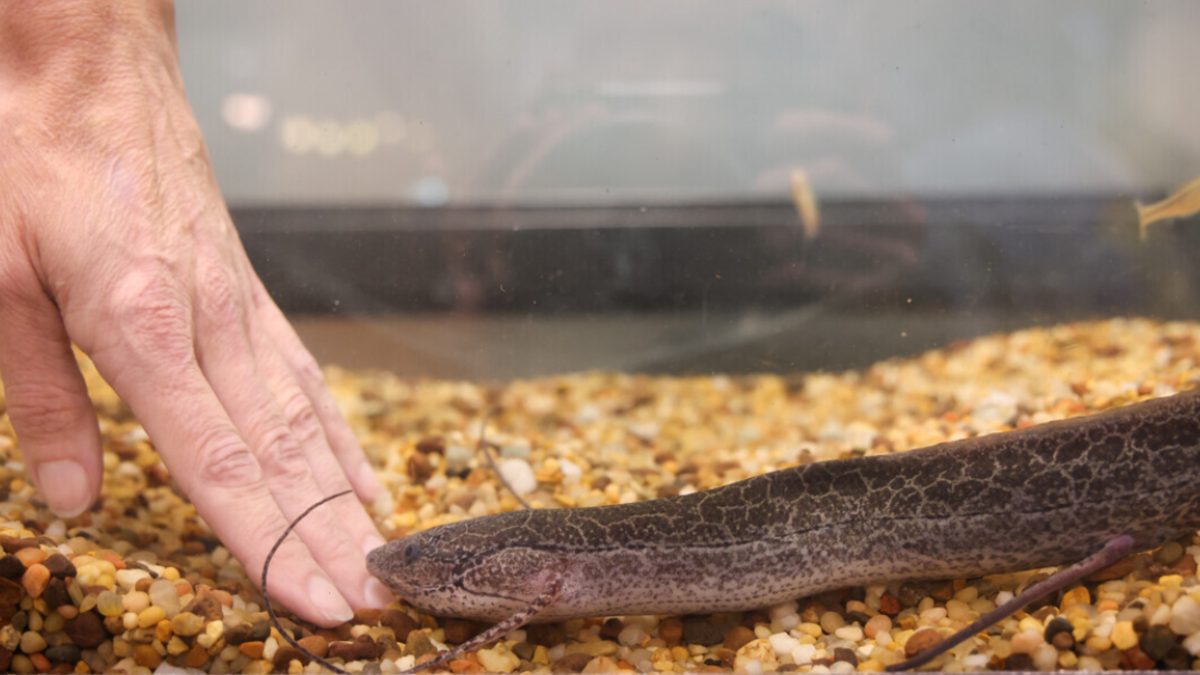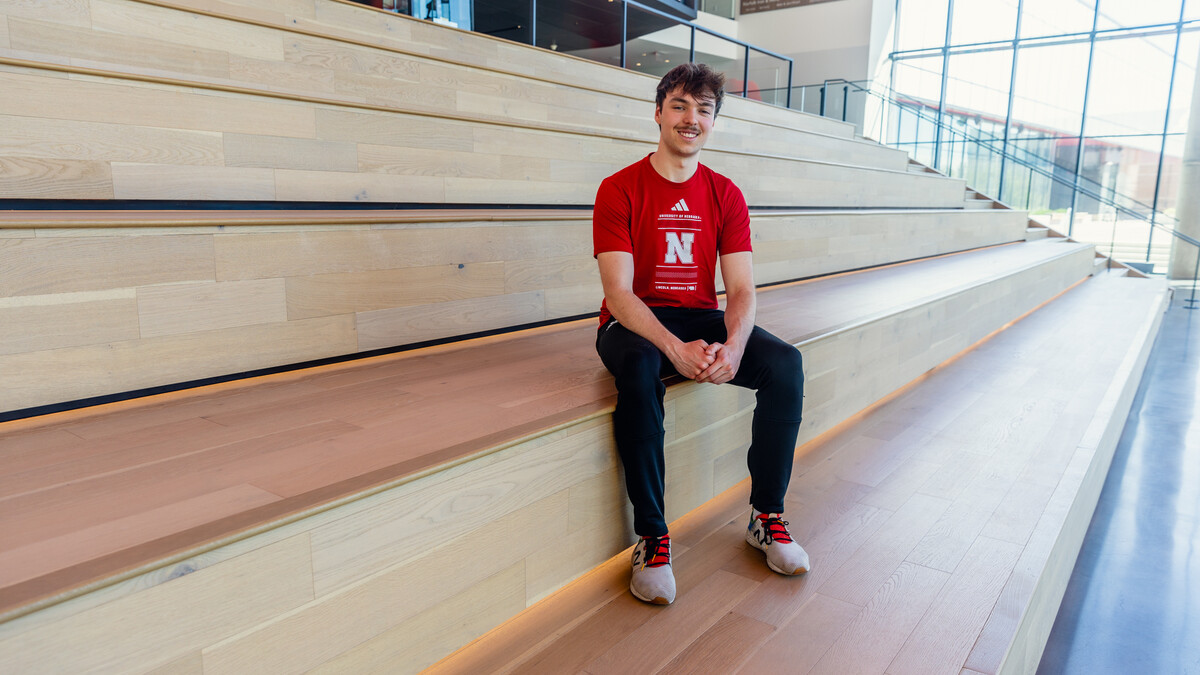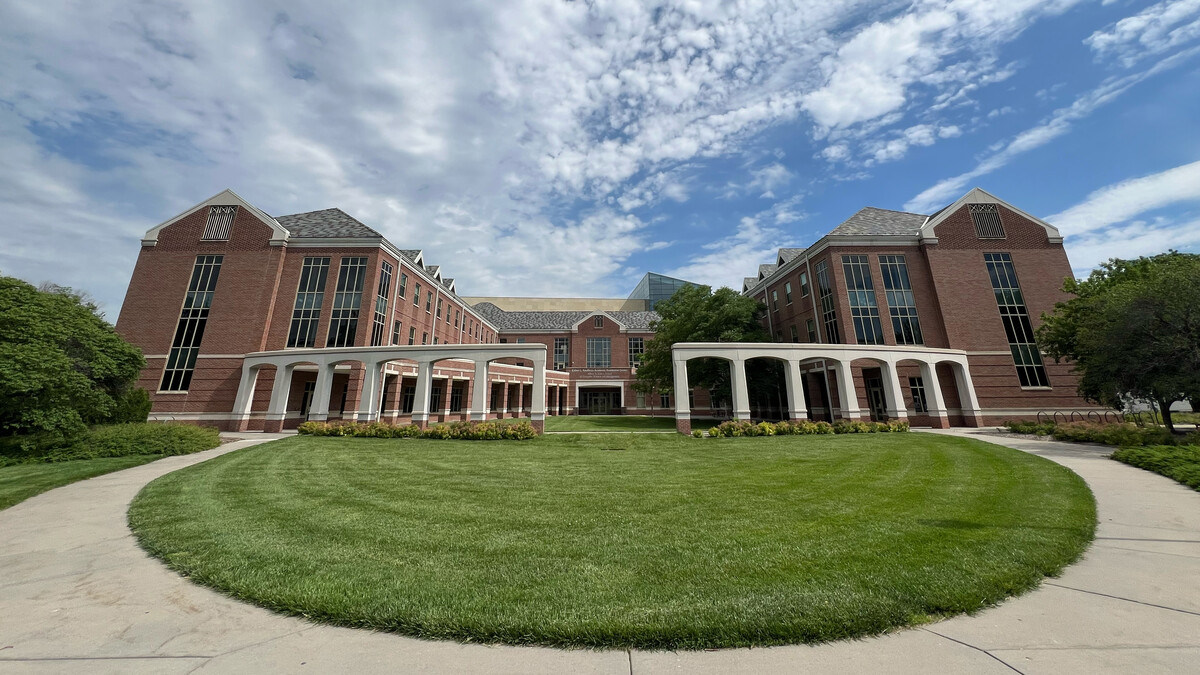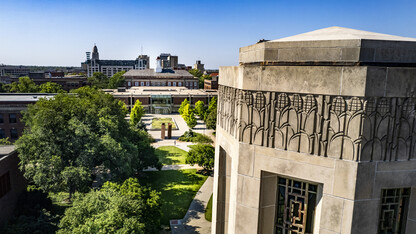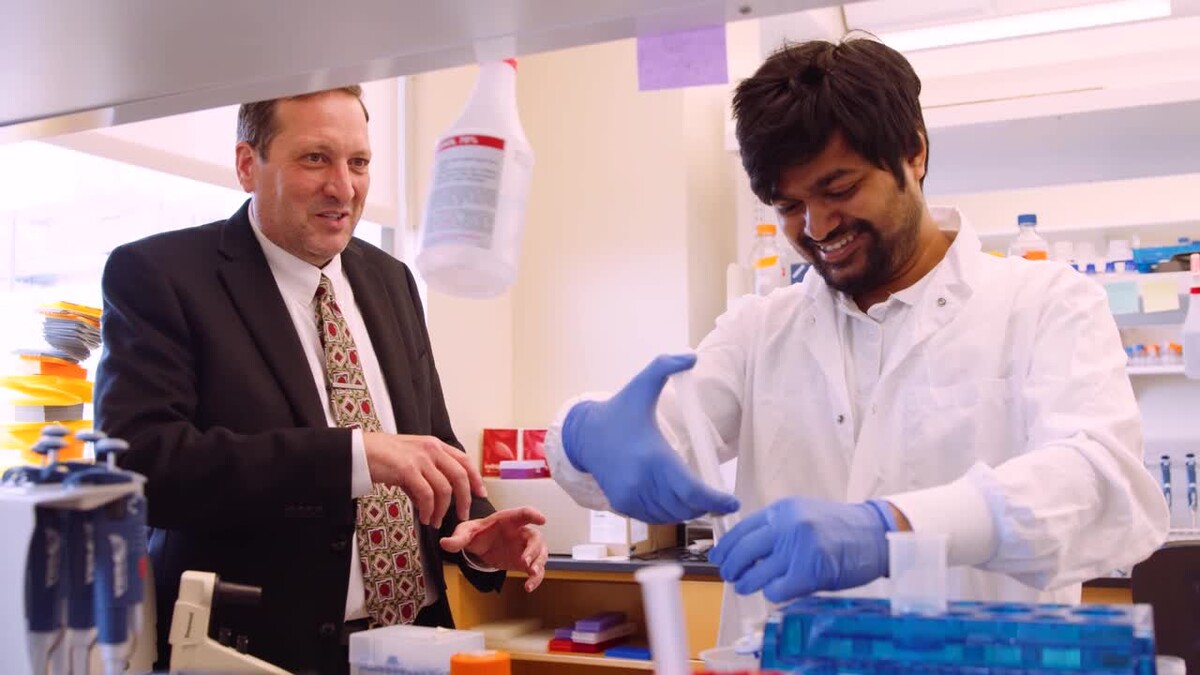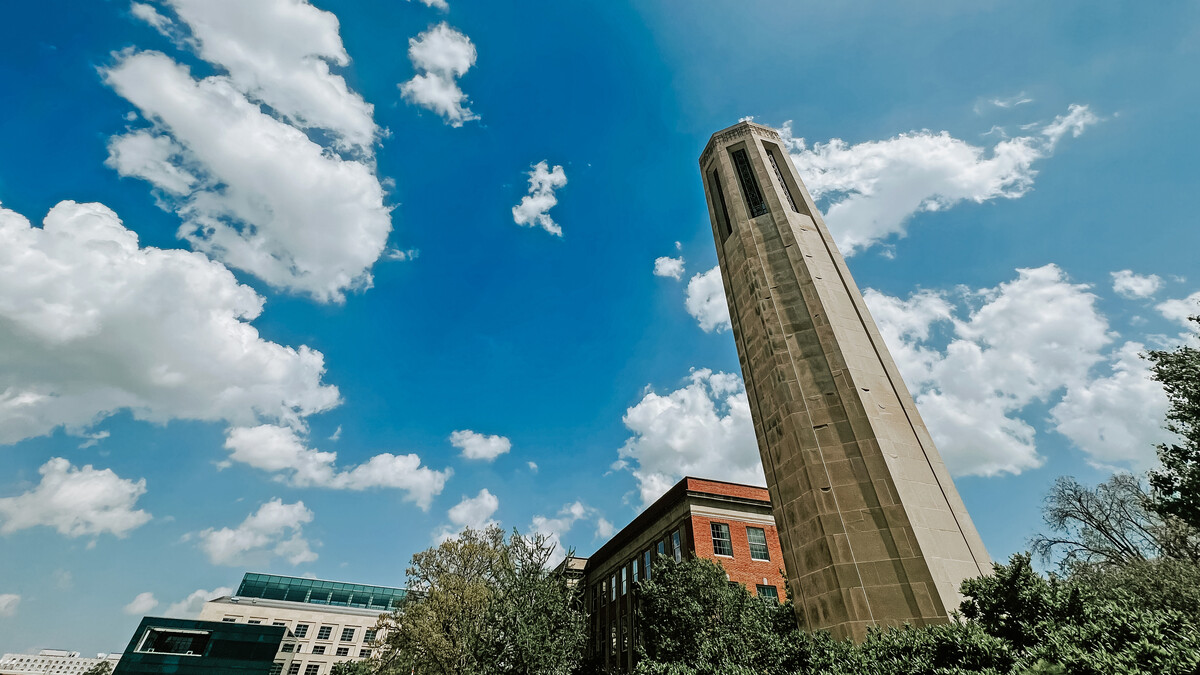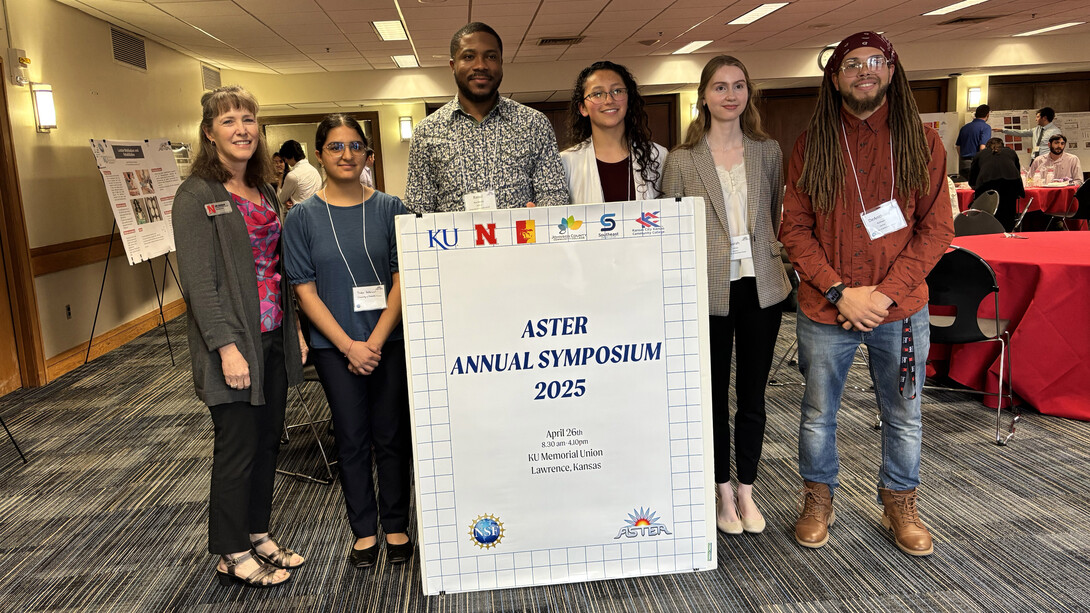
Five Husker undergraduates in the Aligning STEM Trainees for Enterprising Research program traveled to the inaugural ASTER Symposium at the University of Kansas on April 26.
The event celebrated student research achievements and new relationships formed through the ASTER alliance of six colleges and universities across Nebraska and Kansas, including the University of Nebraska–Lincoln. The alliance aims to grow STEM research participation and help students develop workforce-ready skills across the region.
“Before I entered the (ASTER) program, I had no idea what an undergraduate research experience even was,” said Tombi Lee, a sophomore electrical engineering major. “This program pushed me forward to understand undergraduate research or research in general … while helping me to connect to professors on campus in lab settings.”
Lee is one of 13 Husker students who participated in the ASTER program this year, engaging in research and building relationships with faculty mentors. ASTER members include the University of Nebraska, Southeast Community College, University of Kansas, Pittsburg State University, Johnson County Community College and Kansas City Kansas Community College.
“It can be a life-changing thing, for students to connect and explore the function of research and all the shapes it can take,” said Kali Patterson, lead ASTER adviser and project coordinator for undergraduate research and fellowships at Nebraska. “When Nebraska researchers are given opportunities to support trainees, the knowledge potential that we gain as a state is invaluable.”
In Lawrence, Kansas, the symposium showcased scholars’ progress and growth through poster presentations, as well as a keynote speech by Ana Chicas-Mosier and a panel of Louis Stokes Alliance for Minority Participation alumni. Sessions gave students opportunities to network, share knowledge with peers, and explore science communication and researcher resilience topics.
The symposium was “an overall amazing experience,” said DeAnthony Rothwell, a junior microbiology major whose poster presentation won an award for excellence.
Rothwell’s mentor, Kristi Montooth, professor of biological sciences, noted the program’s encouragement of his graduate school ambitions.
“(The program) has had a strong impact on the development of our mentoring relationship, as it allowed DeAnthony and I to collaborate on a new project we identified at the intersection of his interests in microbes, microbiomes and organismal biology,” Montooth said. “This project is furthering his professional development as an independent researcher preparing to apply for Ph.D. programs next year.”
Amy Goodburn, senior associate vice chancellor, dean of undergraduate education and professor of English, said she was proud to travel with Nebraska’s scholars and watch them present research at the symposium.
“They did an excellent job of describing their work and its significance,” she said. “It was a powerful confirmation that undergraduate research makes a difference, enhancing students’ disciplinary knowledge and analytical skills and equipping them with valuable career preparation.”
Rothwell and three additional ASTER students represented the University of Nebraska–Lincoln as presenters at the symposium. The presenters, listed alphabetically by hometown with their year in school, major and faculty mentor, were:
Nebraska
- La Vista: Danielle Barrera-Bojanski, sophomore, chemical engineering, Shannon Bartelt-Hunt
- Lincoln: Sarah Larson, senior, biochemistry, Lindsey Crawford; DeAnthony Rothwell, biological sciences, Kristi Montooth; Prisha Sabherwal, sophomore, computer engineering, Craig Zuhlke
- Lincoln and Cameroon: Raoul Patrick Nya Wandji, senior, computer engineering, Jeffrey Falkinburg
Following the symposium, ASTER scholars and mentors reflected on the year’s achievements and their growth toward STEM research and industry careers.
“[It] boosted my confidence from a research standpoint and allowed me to develop my academic skills, as well as my professional skills,” said Evan Greene, a senior electrical engineering major.
Mike Herman, director/chair of the School of Biological Sciences, mentors Abner Sanchez, a junior biological sciences major. Herman expressed excitement at students’ contributions to knowledge in their fields.
“Abner already has made a new discovery on how nematodes respond to bacterial pathogens (Stenotrophomonas maltophlia),” Herman said. “We’re looking forward to following up on this discovery.”
The following nine additional Husker students completed the ASTER program this year. They are listed alphabetically by hometown, with their year in school, major and faculty mentor(s).
Nebraska
- Elkhorn: Tannor McColly, sophomore, mechanical engineering, George Gogos
- Grand Island: Abner Sanchez, junior, biological sciences, Mike Herman
- Lincoln: Teo Andrade, junior, microbiology, Jessica Corman; Tombi Lee, sophomore, electrical engineering, Ufuk Kilic; Diana Lopez-Sagarminaga, sophomore, secondary education (biology), Amanda Morales and Ted Hamann
- Lincoln and Haiti: Makens (Mike) Altidor, senior, mechanical engineering, Eric Markvicka
- Papillion: Evan Green, electrical engineering, Grace Panther
Kansas
- Overland Park: Lacey Hamblin, senior, biological sciences, Tomasz Bednarski
From Sept. 1, 2024, to May 2, 2025, ASTER alliance activities were supported by a National Science Foundation Louis Stokes Alliance for Minority Participation grant.
